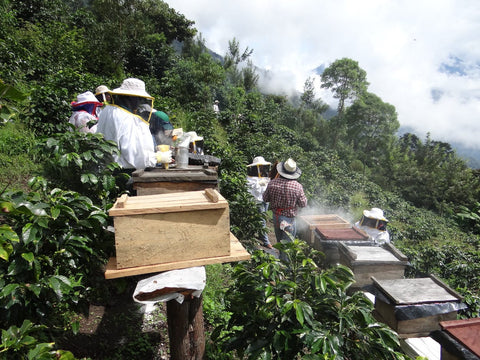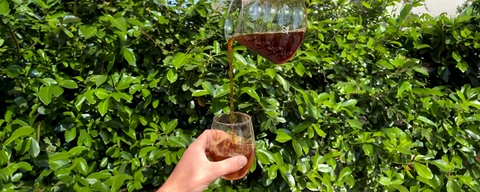First Published - July 29, 2016 (By Pascale - Coffee Lover, Traveller and Mother)
Did you know that as well as exporting coffee, Ethiopia has a strong, domestic coffee culture too? It’s estimated that Ethiopians consume around 3.7 million 60kg bags of coffee a year (The country has more than 90 million inhabitants). That’s about half of their total annual production.
Coffee is a traditional beverage, and drunk in many social occasions there. They call it ‘bunna’ and when travelling one can find independent street stalls serving low-price ‘bunna’ all over. These stalls often have limited seating and space, so they’re frequently full of people socializing and enjoying their brew.

I’m fairly sure as a reader of this blog, you’ll have tried lots of different brewing methods in your search for the perfect cup. But have you ever made coffee the Ethiopian way?

The Ethiopian coffee ceremony is an important part of their culture. The traditional preparation is a time-consuming process, so attending a coffee ceremony makes for an enjoyable event and a chance to relax. The honour of preparing coffee always goes to the matriarch of the house. The ceremony starts with roasting green coffee beans over hot coals in a flat bottomed pan. Or as an alternative by shaking green beans in a shallow pan. After a couple of minutes, the beans start to release their oils, and the host needs to carefully make sure not to burn them. The result of this process is dark brown, shiny, oily, roasted beans.

Once roasted they’re placed on a flat basket, which is passed around the guests, so they can enjoy the aromatic smell of the coffee beans (I think we can all appreciate that moment). The beans are then ground in a wooden or stone mortar and pestle by hand. Back breaking work, but I think it makes the final result all the more worthwhile.
The boiling pot is called a ‘jebena’ and is usually hand made out of black clay. The long neck and the spherical base make the jebena a pleasure to look at. The coffee grounds are placed into the ‘jebena’, and put to boil. When the coffee boils up through the neck it’s poured in and out of another container to cool. Once cool it’s put back into the boiling pot till it boils again.
Finally the host will pour the coffee into small handle-less cups sat on a tray. During the ceremony traditional incense is burned to add to the atmosphere. It’s best to drink this coffee black, but people often add sugar or the herb rue to it. In rural areas they sometimes even add salt.
No Aereopress’ or Syphons here, this is how to brew using one of the world’s oldest methods. If you fancy trying it for yourself, you’ll need to start with some green coffee beans, you’ll find them on our website here.
Best of luck.


